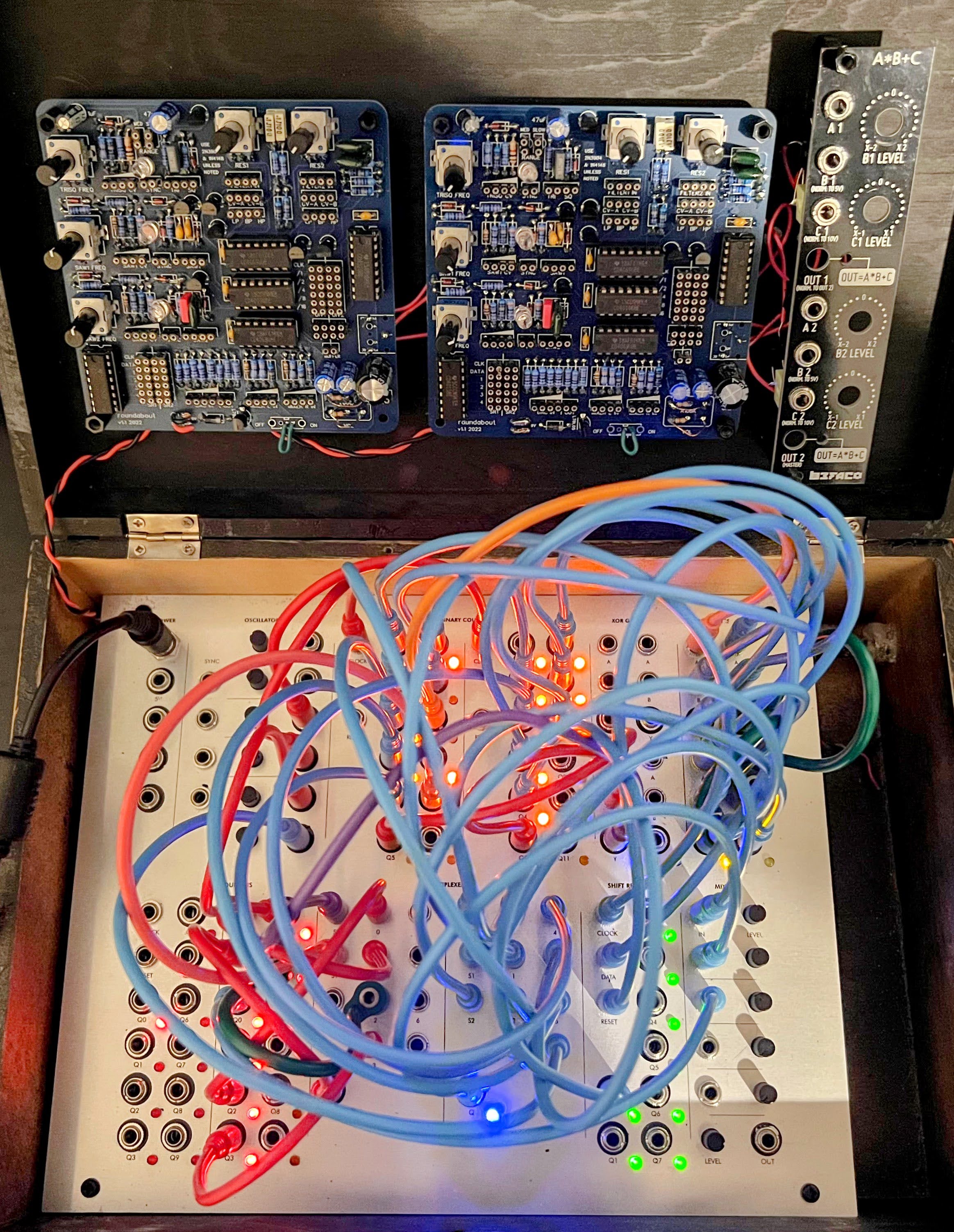A couple of years ago, the Passepartout Duo posted on Reddit about a logic CMOS chip instrument (also called a Lunetta) they had designed, and mentioned they had a few spare PCB’s and panels for sale. I reached out to them and bought one, soldered everything in place, and tossed it in a painted project box I picked up at Hobby Lobby.
It’s a great little machine; the focus on ripple carry and frequency divider chips (like the 4017 and 4020) produce an interesting approach to melody generation, not entirely unlike the Moog Subharmonicon (and its far more vintage predecessors). Binary logic, in this context, can help generate more interesting beat subdivisions, but I feel that there isn’t quite as much as I’d like for how much logic it takes to produce complex rhythms. It also requires a ton of cables. That being said, the six tunable oscillators offer the possibility of phasing by tuning them just a little out of tune. This produces fascinating results at audio and sub-audio rates, and takes full advantage of the instrument’s tendency toward simpler patterns.
More recently, I ordered pcb’s fabricated of Matt Kuebrich’s Roundabout synthesizer, a similar logic-focused instrument with an some CV control and a couple of simple filters. The appraoch to CV is fascinating, and reminds me of the “yeah, you’re out of attenuation, just plug it in and see what happens” approach of the 200 series Buchla modules, and marries the desire for CV control of modern modular synths and the Lunetta binary aesthetics perfectly. It produces fascinating results, different from the Passepartout Duo instrument but compatible.
However, the tiny Dupont cables are a pain to use. Every patch point is too close together, and probably due to the female connectors I used on the board, the cables tend to bend or get stuck or break. I want to build a hat for this thing to convert the cables to 3.5mm cables, which would be much easier to use.
The volume of the output is also far lower than that of the Passepartout Duo instrument - I think Christopehr and Nicoletta were focused on getting a nice boost as a final output, whereas Matt kept his a little more constrained to avoid blowing out headphones or other small devices (like the Monome Norns).
In the process of discovering how frustrating Dupont cables are, it reminds me of my frustration using the small cables with Meng Qi’s version of Peter Blasser’s Din Datin Dudero paper circuit. I may have to revisit the idea there, too.
